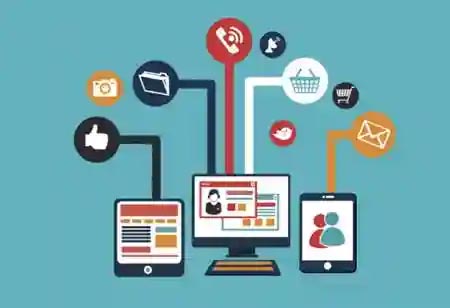THANK YOU FOR SUBSCRIBING

Digital Transformation is Human Transformation
Tiffany Miller, Senior Vice President, Digital Experience Technology, Fidelity Investments

 Tiffany Miller, Senior Vice President, Digital Experience Technology, Fidelity Investments
Tiffany Miller, Senior Vice President, Digital Experience Technology, Fidelity InvestmentsOver the last 5 years, the use of the term Digital Transformation has become common place in everyday conversations. The Digital Age has resulted in incredible innovations that are shifting consumer expectations at an increasingly quicker pace. What was new today is old tomorrow. As a result, organizations across all industries are centering around some variation of the following Digital initiatives: modernizing legacy technology, powering data driven decisions through AI/ML, delivering customer-centric omni-channel experiences, optimizing processes and adopting Agile practices. Each initiative embraces the technical aspect of transformation while often falling short on the human transformation necessary to shift workforce behaviors for the long-term. Digital Transformation, at its core, is a Human Transformation.
To transform one must unlearn to relearn. The process of unlearning can be uncomfortable as it comes with a fair amount of uncertainty once we begin to question methods that repeatedly delivered prior results. If the success of digital transformation rests on propelling people into a state of discomfort, we must invest as much into evolving the workforce as we are moving infrastructure to the cloud or digitizing our service models.
Digital Transformation is the connection between what you do and how you do it. It starts by adopting a “Digital Mindset”across all levels of your organization and is powered by a workforce strategy that continuously re skills associates while strategically closing skill gaps with new hires.
A Digital Mindset is driven by critical thinking and problemsolving skills that enable us to re frame our thinking by allowing new information to alter what we believe to be true. A Digital Mindset allows us to be fully unencumbered by the lessons of the past in order to see the possibilities of the future.
The challenge is that we are programmed to find information as quickly as we can. When evaluating a problem or solution our brains will seek the first piece of information it can recollect to provide an answer. If we accept that first answer, we will continue to do what we knowth us limit, or worst case, prohibit forward progress. The workforce needs to be coached to acknowledge the first answer but to continue mining for other options, to be comfortable that not all options will be winners but that eventually you will have mined enough to understand both the problem and workable solutions. A Digital Mindset is not a place where “this is how we have always done things” lives.
"A Digital Mindset is driven by critical thinking and problem-solving skills that enable us to reframe our thinking by allowing new information to alter what we believe to be true"
If critical thinking and problem-solving skills are what drives a Digital Mindset, the ability to learn new skills is what makes it possible. When organizations are faced with new skill needs, the path forward is typically the development of a one-size fits all curriculum, offered to a sub-set of associates via instructed-led classroom or self-paced online learning over an extended time period. This approach has historically yielded positive results over time – a group of people equipped to work on a project that is slated to start a few months or year(s) from now. Contrast this approach with the pace of today’s technological advancements where technical skills are being replaced every 2-3 years, with some skills becoming less relevant while others become prominent just in time to begin your next digital transformation initiative. To maintain forward progress, associates must be able to acquire new skills while shedding skills that no longer serve a purpose.
Organizations must shift from an episodic approach to learning, as noted above, to a culture of continuous learning. In a continuous learning environment,associates learn via methods best suited to their learning style and put their learning into practice on their next project or initiative, just in time.
To achieve this organizations should consider the following:
1) Prioritizing learning in order to ensure a skill ready workforce is available to deliver customer value and the desired business results
2) Offering self-paced and hands-on learning programming that tailors the learning journey to both individuals and teams working towards a common goal
3) Curating an ecosystem that connects people to content and to one another in order to expedite the learning process through known solutions and direct knowledge sharing
It is important to note, strategic skill acquisition to embed specific expertise within teams is also a key element of any workforce strategy. However, acquisition alone is simply not scalable enough to handle the pace of changing skill demands.
Digital Transformation is more than just embracing the new technology to drive business results. It is an opportunity fully embracea Digital Mindset and those that do will find themselves better positioned to take advantage of new business opportunities by a workforce that is adept at reacting quickly to shifts in the market.
Read Also






















ON THE DECK
SCADA 2022